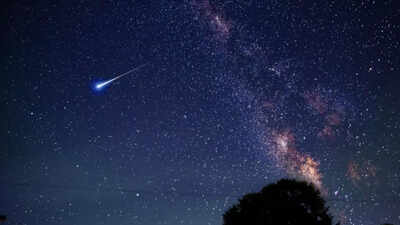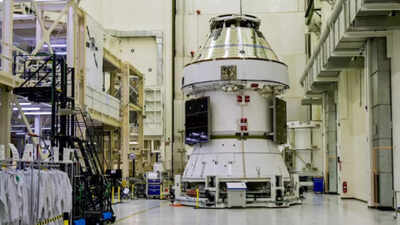“Take vacations before October 29!”: Harvard astrophysicist warns as 3I/ATLAS sparks debate over possible artificial origin |

A Harvard astrophysicist has sparked widespread curiosity online by warning people to “take vacations before October 29,” suggesting that NASA may be withholding critical information about a mysterious interstellar object passing through our solar system. Designated 3I/ATLAS, this visitor has captured global scientific attention due to its unusual size, estimated at roughly 5.6 kilometres across, extraordinary speed, and puzzling trajectory. Unlike typical interstellar objects, it emits nickel tetracarbonyl, a compound previously known only from industrial processes on Earth, and lacks detectable iron, further deepening the mystery. The object’s odd behaviour and chemical composition have divided the scientific community, prompting debates about whether it could be a natural relic from another star system or something far more extraordinary, challenging conventional cosmic explanations.
3I/ATLAS: The giant interstellar object moving faster than ever seen before
First detected in July, 3I/ATLAS is estimated to be roughly the size of Manhattan, approximately 5.6 kilometres in diameter, and weighs an astonishing 33 billion tons. Its velocity nearly doubles that of previous interstellar travellers like ‘Oumuamua and Borisov, and its behaviour challenges some established laws of cosmic physics.The object’s unusual motion and trajectory, particularly its alignment within five degrees of the planetary ecliptic plane, suggest a rare precision in its orbit. Such features have led some experts to consider possibilities beyond traditional celestial mechanics.
Is 3I/ATLAS man-made? Dr Loeb shares his theory
Dr Avi Loeb, a Harvard professor known for his unconventional theories on extraterrestrial life, has proposed that 3I/ATLAS may be artificial in origin. Loeb highlights its unique chemical composition and unusual behaviour as potential indicators of non-natural phenomena. The object’s gas jet points toward the Sun, contrary to normal comet behaviour, and its finely tuned orbit may suggest deliberate design. He also claims that NASA may not have been fully transparent with all the scientific data, fueling online speculation.Observations using Hawaii’s Keck II telescope revealed that 3I/ATLAS emits nickel tetracarbonyl, a compound typically produced only by industrial processes on Earth. The object releases roughly four grams of nickel per second and contains no trace of iron, a combination never seen before in any celestial body.As reported by The New York Post, Loeb shared, “There is only one place where that is known to exist and that is in industrially produced nickel alloys. This was never observed for any other object.” This unusual chemical signature has led him to suggest that 3I/ATLAS might have an artificial origin.
Scientific debate and NASA’s response to 3I/ATLAS
The discovery of 3I/ATLAS has divided the scientific community. Some researchers view it as a potential clue to intelligent design or advanced extraterrestrial technology, while others urge caution, suggesting that natural explanations must be thoroughly investigated first.In podcasts and interviews, Loeb has expressed concern that NASA has delayed releasing images, including those from the Mars Orbiter, which allegedly captured the object near Mars. He argues that the public deserves full transparency from the agency. “Who cares about the communication departments? We want to see the data from the scientists,” he stated.Despite the controversy, NASA has reassured the public that 3I/ATLAS poses no threat to Earth and will safely pass through the inner solar system.
Spanish astronomers offer a natural explanation for 3I/ATLAS
Astronomers from Spain’s University of A Coruña offer a conventional explanation. Their simulations, still under peer review, found no evidence of artificial interference. They identified 93 potential stellar encounters, but none significantly influenced 3I/ATLAS’s trajectory.Dr Pérez Couto, one of the study’s authors, said, “Each observation is like opening a window into the Universe’s past. It allows us to study the evolution of materials that were formed around other stars.” The team concluded that 3I/ATLAS likely originated from the galaxy’s thin disk, an ancient region believed to be up to 10 billion years old.Despite the conventional explanation, Loeb remains unconvinced. Known for challenging mainstream scientific views, he insists that science should remain open to possibilities beyond standard explanations. “If it was designed by intelligence, you would not be able to predict exactly what it would do. It’s like finding a visitor in your backyard,” he explained. Loeb also suggested that his warning to “take vacations before October 29” may coincide with upcoming observations or new data releases that could provide crucial insights about 3I/ATLAS.Also Read | A second moon for Earth? NASA’s quasi-moon begins its 50-year orbital journey around our planet until 2038






